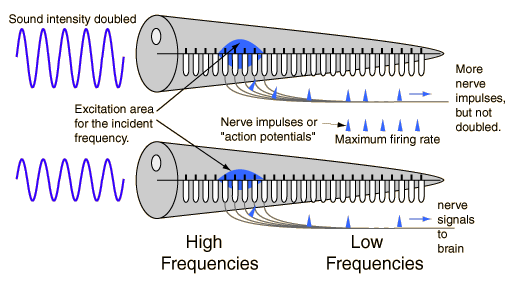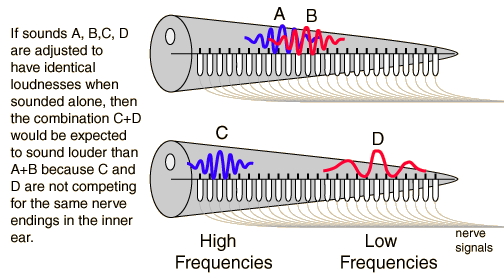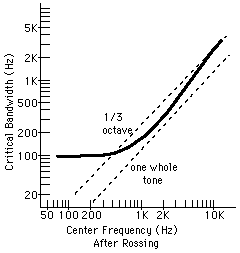"Rule of Thumb" for Loudness
A widely used "rule of thumb" for the loudness of a particular sound is that the sound must be increased in intensity by a factor of ten for the sound to be perceived as twice as loud. A common way of stating it is that it takes 10 violins to sound twice as loud as one violin. Another way to state the rule is to say that the loudness doubles for every 10 phon increase in the sound loudness level. Although this rule is widely used, it must be emphasized that it is an approximate general statement based upon a great deal of investigation of average human hearing but it is not to be taken as a hard and fast rule.

Why is it that doubling the sound intensity to the ear does not produce a dramatic increase in loudness? We cannot give answers with complete confidence, but it appears that there are saturation effects. Nerve cells have maximum rates at which they can fire, and it appears that doubling the sound energy to the sensitive inner ear does not double the strength of the nerve signal to the brain. This is just a model, but it seems to correlate with the general observations which suggest that something like ten times the intensity is required to double the signal from the innner ear.
One difficulty with this "rule of thumb" for loudness is that it is applicable only to adding loudness for identical sounds. If a second sound is widely enough separated in frequency to be outside the critical band of the first, then this rule does not apply at all.
While not a precise rule even for the increase of the same sound, the rule has considerable utility along with the just noticeable difference in sound intensity when judging the significance of changes in sound level.
Loudness concepts
Hearing concepts
| HyperPhysics***** Sound | R Nave |

